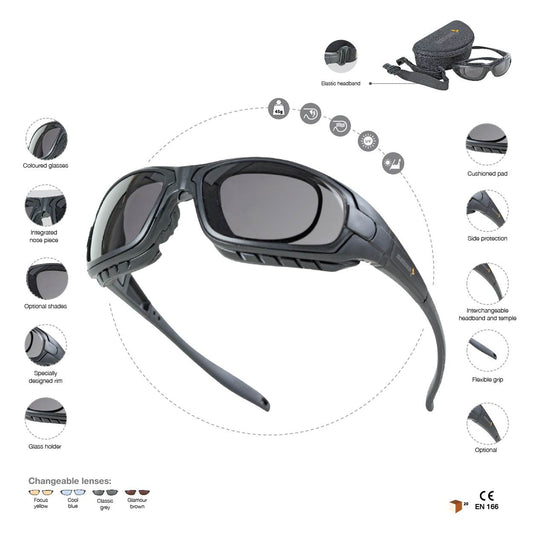“Cement, second to water is the most consumed substance in the world! According to a report published by Statistics Portal, the total world production of cement is expected to be around 4.8 billion metric tons by 2030”.
The cement industry is the building block of the nation’s construction industry. It is almost impossible for the construction projects to take place without using cement somewhere in the design. The workers working in cement industry must possess the necessary knowledge of how to keep them safe and protected while working on a construction site. Cement workers are exposed to usage cement, plasters, adhesives, roofing sheets, pipe lagging, pipe boxing, boiler housings, paints, and bitumen’s on a daily basis without any idea of what dangers they possess and the kind of harm it was doing to the internal organs.

“The global cement market size is expected to reach USD 682.3 billion by 2025, according to a new report by Grand View Research, Inc., expanding at a CAGR of 7.8% during the forecast period”.
The workers need to keep in mind certain guidelines while working in the cement industry. The most common hazards associated with cement industry includes corrosion, toxic hazards, fire, air contamination and cement dust. Let’s have a look at the pointers mentioned below:
Eyes And Head Protection: The body can be exposed easily to the cement work in the air. The cement industry workers suffer from eye diseases in the form of pterygium and conjunctivitis. By wearing protective eyewear, one can protect the eyes from the cement filled air. Safety eyewears include goggles, glasses and eye accessories. Eyesight is precious and one should use proper safety equipment in the form of full-cover goggles/safety glasses with side shields to avoid any mishaps.The head can be protected against potential falling objects by wearing a sturdy safety helmets in the form of hard hats, bump cats and skull accessories.
Skin Protection: Cement work causes skin irritation and develops rashes as well as chemical burns in the body. In order to prevent this, workers are advised to wear full-sleeved clothing and make sure that they take regular intervals to remove cement from their body. Workers engaged in long contact with fresh cement can suffer from third-degree burns. In case of any complications, the workers are suggested to contact a dermatologist. Common skin diseases include eczematous lesions and cement dermatitis.

Back Protection: Making a cement base involves the use of plenty of raw materials in the form of sand, coarse aggregate, water, and Portland cement. Lifting those heavy objects on the back can give the workers either a pulled muscle or a painful slip disc. The company should ensure that they either install a machine for the transfers or the workers transfer the load in turns so as to give their backs the much-needed rest. The most effective option for the workers is to use a wheelbarrow to push the materials from one place to another. Most common back injuries are Spondylolisthesis and Spondylolysis.
Medical Issues
Spondylolisthesis is a condition in which one of the vertebrae slips out of place onto the bone below it. Low back pain is the most common symptom.
Spondylolysis is defined as a defect or stress fracture in the pars interarticularis of the vertebral arch. The vast majority of cases occur in the lower lumbar vertebrae , however spondylolysis may also occur in the cervical vertebrae.
Cement DermatitisSkin contact with wet cement causes inflammation of the skin, known as Dermatitis.Contact with cement can cause a non-allergic form of dermatitis, known as irritant contact dermatitis, which is related to the caustic, abrasive, and drying properties of portland cement.
ConjunctivitisConjunctivitis is a disease which causes inflammation of the membrane covering the surface of the eyeball. It can be a result of infection or irritation of the eye.

Occupational health and safety has become a public health priority in industrialized countries and a primary concern, especially in high risk industries (Rachid et. al. 2015).
Because cement has been used commonly, its health effects have become an important issue both for employees and the environment. In addition to the various health hazards, cement workers are especially exposed to dust which causes lung function impairment, chronic obstructive lung disease, restrictive lung disease, pneumoconiosis and carcinoma of the lungs at various production process such as quarrying, crushing, raw material grinding, blending, kiln burning, cement grinding and packaging in cement industry. Therefore, ensuring healthy and safe working conditions for employees and contractors is of primary importance.




